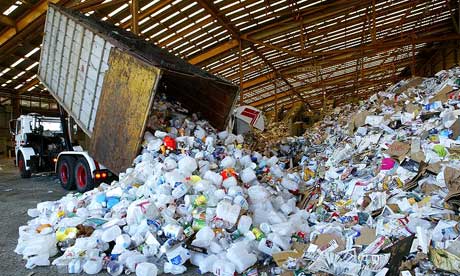(Repeats to fix typo in eighth paragraph, no other changes to headline or text)
By Timothy Gardner and Michael Szabo
NEW YORK/LONDON, Aug 21 (Reuters) - The largest U.S. greenhouse gas emissions market has paid farmers millions of dollars in the name of fighting climate change, but the money may have done little, if anything, to slow global warming.
The National Farmers Union said this month that some of its members had been paid a total of $8 million since 2006 by the Chicago Climate Exchange for taking voluntary actions such as no-till farming. The technique arguably cuts emissions by leaving crop waste undisturbed to decay under the soil.
But many farmers began practicing no-till years before members signed agreements with the CCX, and that is where the problem lies.
Liz Friedlander, a spokeswoman for the NFU, said many of the farmers who received the payments had made no recent changes in the way they farm. "It's not really a huge sacrifice on their part to do it," she said.
Carbon market traders have coined such credits "anyway tonnes" -- meaning they represent emissions reductions that would have happened anyway, even if the exchange did not exist. Many companies looking to offset their emissions avoid these tonnes altogether, fearing they may damage their image.
The CCX, which is run by Britain's Climate Exchange Plc , boasts a member base of over 350 members including companies, nonprofit organizations and cities, all of which voluntarily sign a legally-binding pledge to cut emissions. If members can't do so they must buy credits over the exchange, such as the no-till credits, that profess to represent emissions reductions.
The CCX would not comment for this story. It does not reveal what percentage of its credits come from no-till farming or how much the farmers get paid compared to how much the credits sell for on the exchange. Since its inception credits representing about 86 million tonnes of emissions reductions have been traded on the CCX.
Players in the more mature European emissions markets, where heavy industry is forced to buy permits to pollute, slam "anyway" credits as being harmful to the market's reputation.
"I might as well sell an offset for when I turn my bedroom light off at night," said Emmanuel Fages, an emissions analyst at French investment bank Societe Generale.
And the Chicago credits trade at only a fraction of those in Europe. CCX credits were trading below $4 a tonne on Thursday compared to about $35 dollars in Europe, where emissions trading was launched in 2005.
SKEPTICISM
As the U.S. looks to join the rest of the developed world in regulating greenhouse gases, with both presidential candidates supporting the use of market mechanisms like cap-and-trade to curb emissions, the CCX may have to change its practices to compete with other emerging carbon exchanges like the Green Exchange, which NYMEX launched in March.
"As a long-term strategy it could be quite detrimental," Sian Mooney, an agricultural economics professor at Boise State University in Idaho, said about the effect CCX's non-additional credits could have on building a wider carbon market in the United States, historically the world's largest carbon emitter.
Will Pearson, global energy analyst at the Eurasia Group, said: "They are somewhat esoteric markets as they are. When people see things that seemingly don't have any additionality, it increases skepticism."
At least one CCX member, TerraPass, which aggregates and sells carbon credits aimed to help consumers reduce the climate impact of their driving, said it avoids no-till credits.
"One of the reasons we've steered clear of sequestration and soil sequestration projects is precisely that some of these have ... questions around additionality, so we don't do any of that project type," said Tom Arnold, the company's founder and chief environment officer.
CHANGES
Many experts said CCX had to be somewhat lax in forming standards in order to create a member base of companies who were new to carbon markets.
"If you make the stipulations too onerous and too expensive ... then you might not get anyone to come and play in your market," said Mooney.
Alex Rau, who helped form the Voluntary Carbon Standard, guidelines for carbon credits, said that in the future players in voluntary markets "have to think hard and fast about the trade-offs in sacrificing quality in the name of trading volumes" because new voluntary markets are emerging as states and even U.S. federal regulators take steps in forming new greenhouse markets.
And if the United States adopts federal regulations on greenhouse gases, the CCX may have to make "dramatic changes" in the way it does business because national standards will dictate what makes good credits, said Mooney.
Mark Trexler, whose company EcoSecurities is a member of CCX, said: "I'm not sure we need to prime the pump with credits that are non-additional, when there are enough additional credits out there that are credible." He said using "anyway" credits could "lead a lot of people to conclude that the whole concept of carbon markets is flawed." (Editing by John Picinich)

 http://www.guardian.co.uk/environment/2008/aug/19/recycling.waste
http://www.guardian.co.uk/environment/2008/aug/19/recycling.waste
